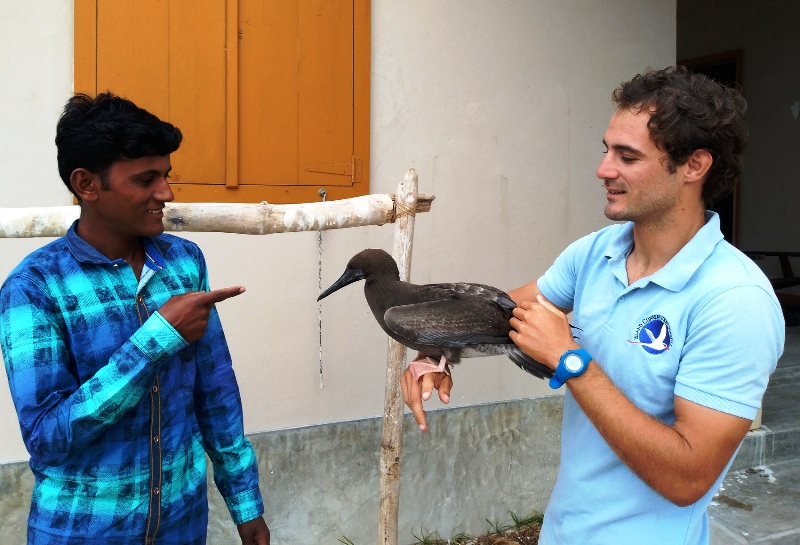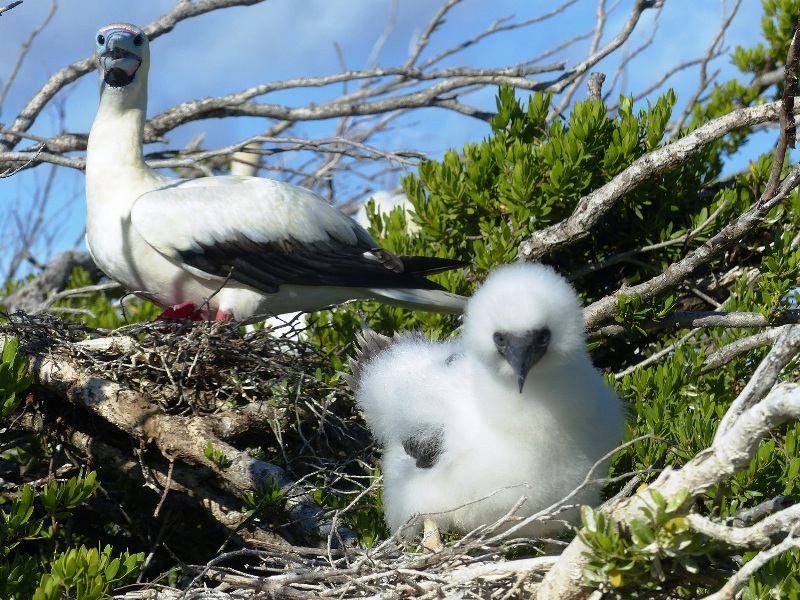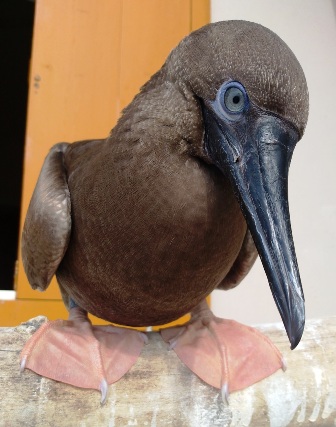Extraordinary increase in Red-footed Boobies numbers at Farquhar |02 July 2018

Farquhar Atoll holds many interesting seabird populations – from the numerous to the miniscule. Previously, Farquhar was seldom visited by scientists, but with Island Conservation Society (ICS) establishing a conservation centre on the atoll’s northern main island, Ile du Nord, in 2014 continuous monitoring has seen some remarkable results.
The centre was established thanks to funding from the Outer Islands Project, supported by the government of Seychelles, United Nations Development Programme (UNDP) and the Global Environmental Facility (GEF). The Islands Development Company (IDC) has provided accommodation and logistical assistance to enable ICS staff to begin conservation work based at Farquhar for the first time.
Among the data collected in this time, no results are more astonishing than those regarding Red-Footed Booby Sula sula (Fou Bet), a species which has seen a remarkable growth in population in recent times, even during difficult moments.
The name booby comes from the Spanish word ‘bobo’, meaning clown; with its bright red feet and blue bill in adult plumage, you can understand why this name has stuck. Fou Bet breeds in only a few locations in Seychelles, from the Aldabra Group up to Marie Louise in the Amirantes. Furthermore, incredibly large roosts of individuals have been observed at St Francois Atoll by ICS Alphonse in 2017. The species is common-sight in the outer islands, whereas the species is only infrequently observed in the Granitics.
In recent times Farquhar’s population has increased in great numbers. Twenty years ago, there were estimated to be 50-70 pairs breeding exclusively on Ile du Sud. Five years ago, this figure had risen to around 1,000 and incorporated some of Ile du Nord. In 2015 the census revealed a substantial breeding population growth; over 4,000 pairs.
Then, in 2016 – disaster; cyclone Fantala ripped through Farquhar during the peak of the laying period for the Fou Bet. All nests, eggs and chicks were destroyed. All casuarina trees, Fou Bet’s nesting site, devastated. An end to the influx it seemed.

By the time another breeding population census was completed by ICS, it was July 2017. Had the species had time to recover? Well, ‘recover’ may be the wrong word.The result found a population that had doubled. In 2018, this figure has again risen by a substantial amount.
Although the population had returned, it only populated Ile du Sud. Furthermore, it had swapped nesting habitat from tall casuarina trees to the much shorter, denser Pemphis acidula (a mangrove-type thicket).
casuarina trees to the much shorter, denser Pemphis acidula (a mangrove-type thicket).
So why has this species done so well? Where have the birds come from? Well, although regular censuses are completed here, some populations aren’t so frequently monitored currently, such as Cosmoledo, birds may have declined there and increased on Farquhar.
It is also thought that some have immigrated from the Madagascar region due to a small percentage of individuals having a different ‘morph’ (colour) known only from Tromelin and Europa in the western Indian Ocean region. Fou Bet also tends to nest on the highest available vegetation, and with Casuarina trees all but obliterated it is possible to fit more pairs in to the denser Pemphis. All these are nothing but hypotheses at the moment but the ICS team will investigate these further in years to come.
During this year’s census one of the ICS Farquhar team found a chick which had fallen from its nest and strayed far from it. Although ICS is not an animal rescue NGO, the team thought it wouldn’t take much out their day’s work to feed and nurture it.
Three months later, ‘Solomon’ is now the social hub of the island, regularly visiting all inhabitants throughout the day all over the island. As he learns to fish in the daylight, he always comes to the ICS house to be fed in the evening. Breeding success for Fou Bet is by no means 100%, but ICS may be able to add one more to censuses in the years to come.
Thomas Collier




